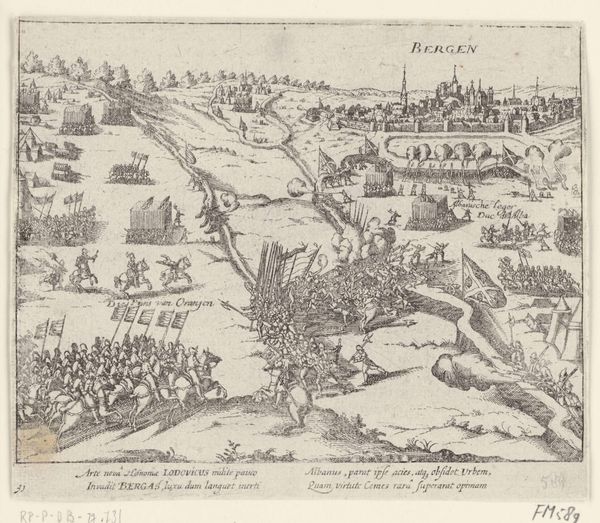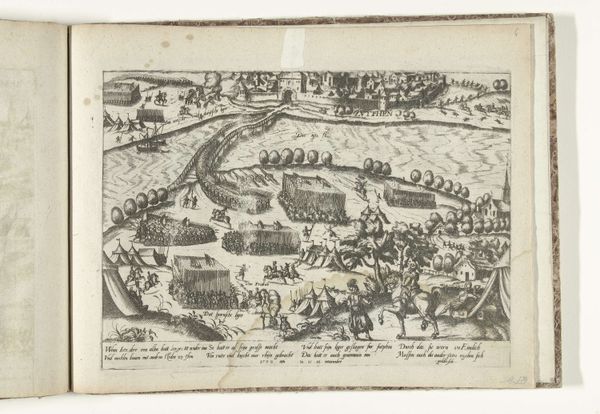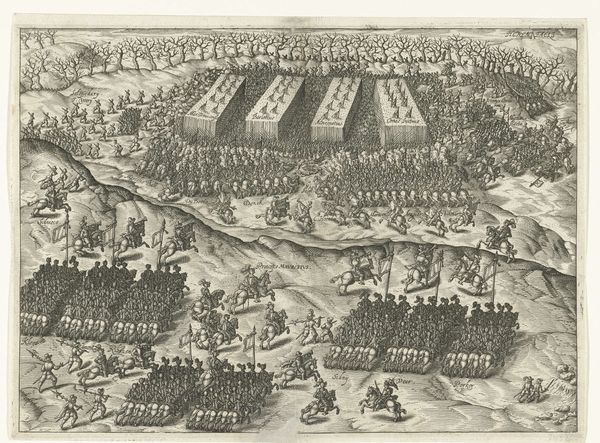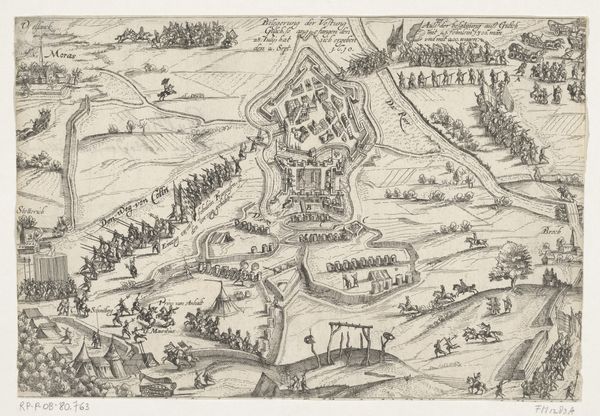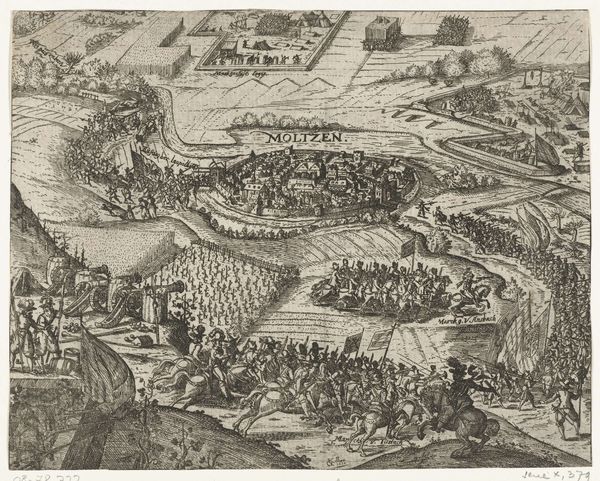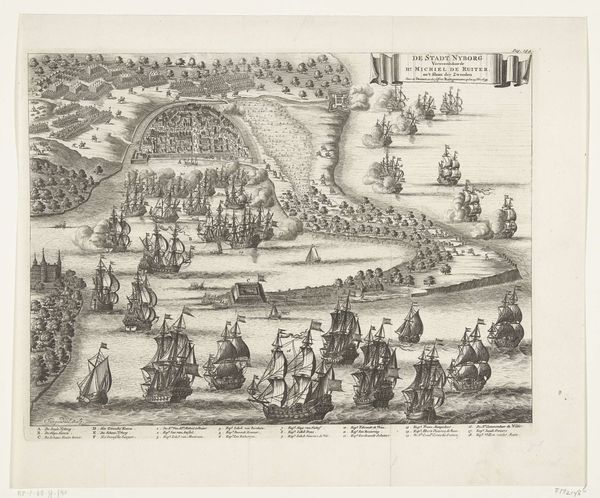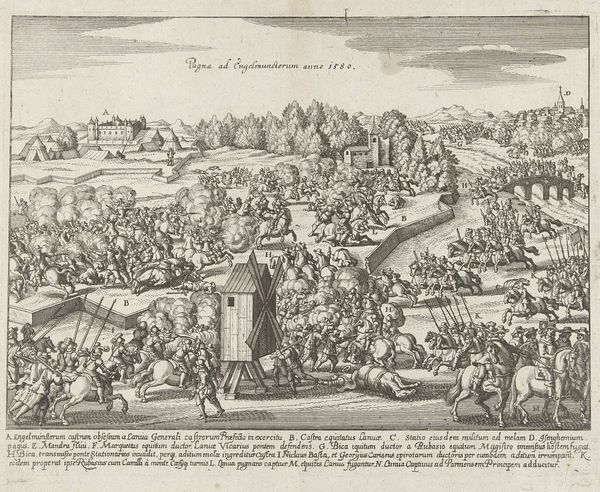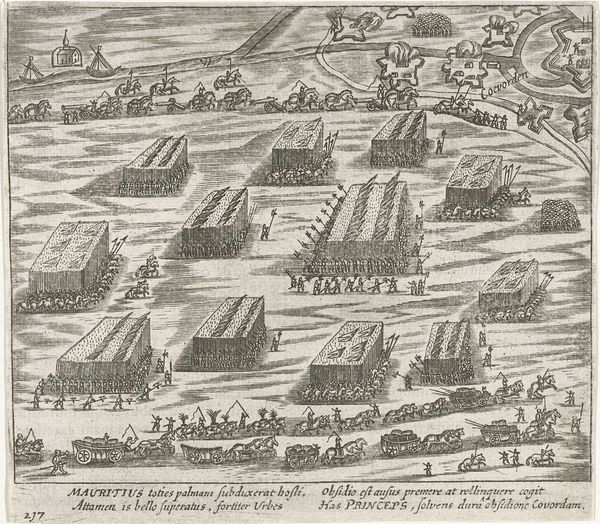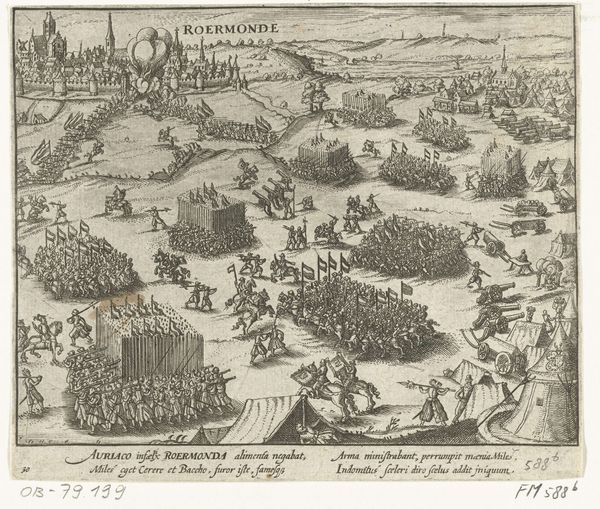
print, etching, engraving
#
baroque
#
dutch-golden-age
# print
#
etching
#
landscape
#
cityscape
#
history-painting
#
engraving
Dimensions: height 132 mm, width 157 mm
Copyright: Rijks Museum: Open Domain
This print, "Prins van Oranje trekt over de Maas, 1568," was made by an anonymous artist, using engraving. Look closely, and you’ll see the image is composed of thousands of tiny cuts made into a metal plate. The artist would have used a tool called a burin to create these lines, each one carefully placed to build up the image's details. Think about the labor involved; the engraver would have to be both precise and patient. This print, like many others from the era, served as a form of mass communication. It wasn't just about aesthetics, but about conveying information and shaping public opinion during a time of political upheaval. The choice of engraving as a medium speaks volumes about the values of the time. It's a craft rooted in skill, precision, and the ability to reproduce images on a large scale. By understanding the materials and processes used to create this print, we gain a deeper appreciation for its historical and cultural significance, moving beyond simple aesthetic appreciation to a more informed understanding of its place in society.
Comments
No comments
Be the first to comment and join the conversation on the ultimate creative platform.

